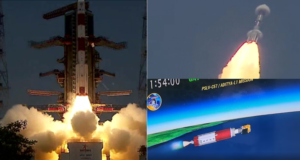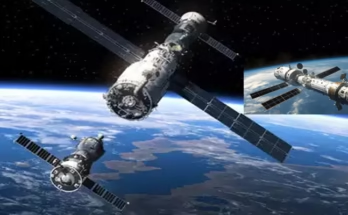#ISRO has become the third space agency, following the National Aeronautics and Space Administration (NASA) and the European Space Agency (ESA),
to position an observatory at the Lagrange point 1 (L1) between the Earth and the Sun.
 RNS: Indian Space Research Organisation (ISRO) on Saturday successfully launched its first observation mission to the Sun, just days after the country made history by becoming the first to land near the Moon’s south pole.
RNS: Indian Space Research Organisation (ISRO) on Saturday successfully launched its first observation mission to the Sun, just days after the country made history by becoming the first to land near the Moon’s south pole.
India has achieved a significant milestone by successfully launching its inaugural solar mission, placing Aditya L1 into orbit. The Indian Space Research Organisation (ISRO) accomplished this feat shortly after making history with the first-ever landing near the Moon’s South Pole.
Aditya-L1 took off from Sriharikota’s launch pad on a Saturday morning at 11:50 AM (IST). The mission’s objective is to journey approximately 1.5 million kilometers (932,000 miles) away from Earth, which corresponds to 1% of the Earth-Sun distance. The travel to this distant point will take around four months, as estimated by ISRO.
In a remarkable achievement, ISRO has become the third space agency, following the National Aeronautics and Space Administration (NASA) and the European Space Agency (ESA), to position an observatory at the Lagrange point 1 (L1) between the Earth and the Sun. This specific point, situated about 1.5 million kilometers from Earth, marks a place where the gravitational forces of the Earth and the Sun counterbalance, allowing a spacecraft to effectively “hover.”
Upon reaching this strategic location, Aditya-L1 will harmonize its orbit with the Sun’s, moving at the same pace as the Earth. This alignment significantly minimizes the need for fuel consumption to maintain its orbit.
ISRO Chairperson S Somanath expressed congratulations for the precise injection of the Aditya L1 spacecraft into its elliptical orbit. This intricate manoeuvre involved the upper stage of the Polar Satellite Launch Vehicle (PSLV) executing two burns for the primary satellite, showcasing a unique mission approach.
Mission Director Biju S R highlighted the complexity of the orbital requirements provided by the satellite team, resulting in a novel mission descent strategy. Rigorous simulations validated this strategy, enhancing PSLV’s capabilities for new and challenging missions.
Notably, the solar mission bears the name “Aditya L1” in honour of Surya, the Hindu deity symbolizing the Sun. This monumental endeavour signifies India’s foray into studying the solar system’s largest celestial body and reinforces its growing prowess in space exploration.



